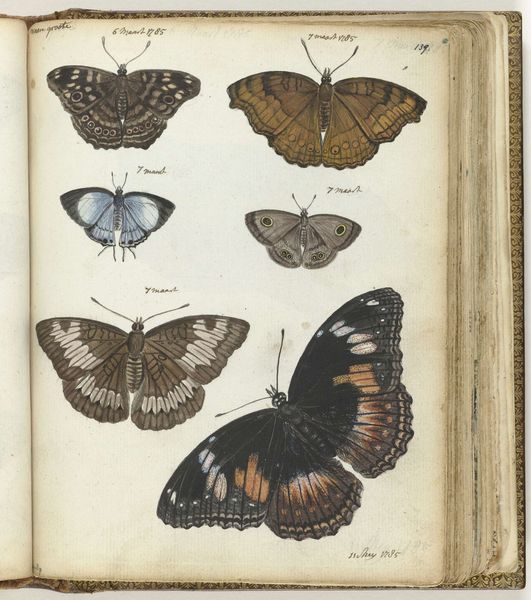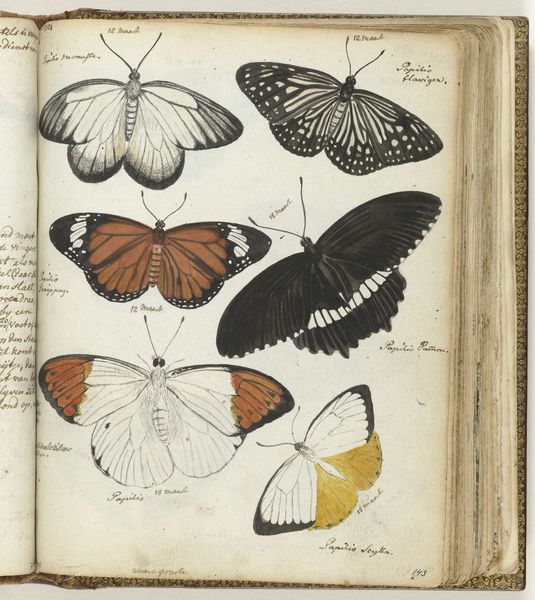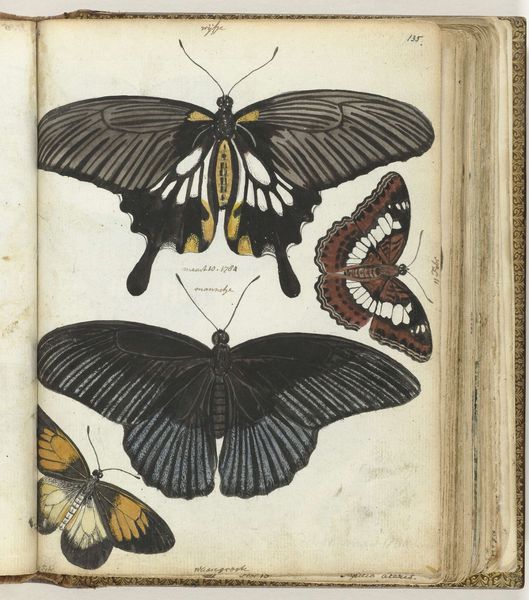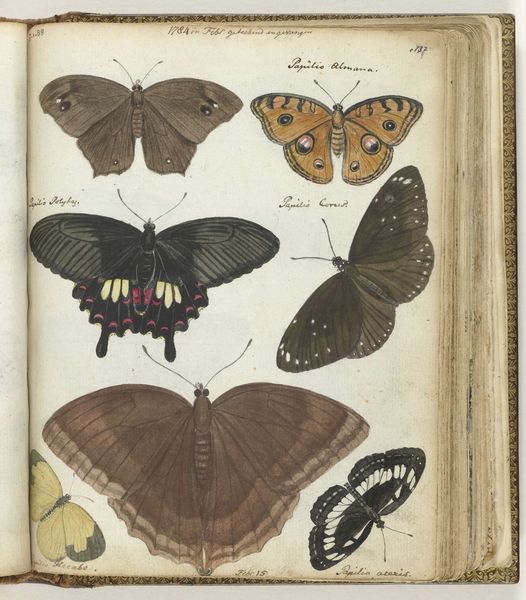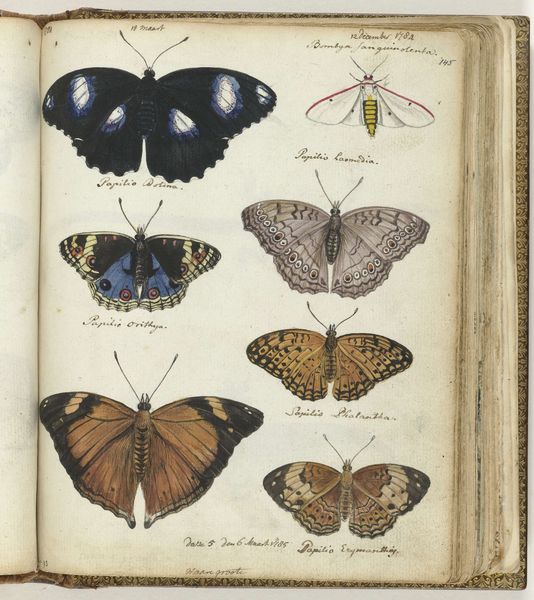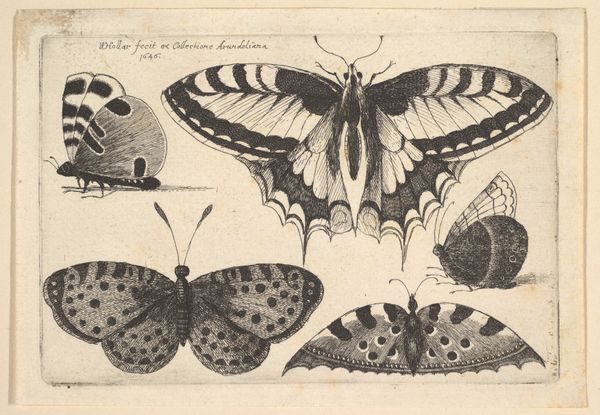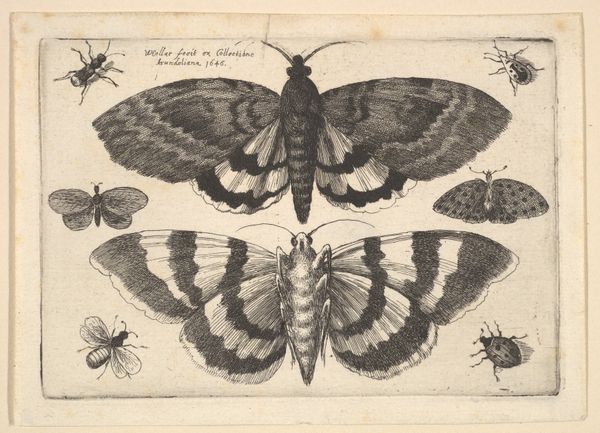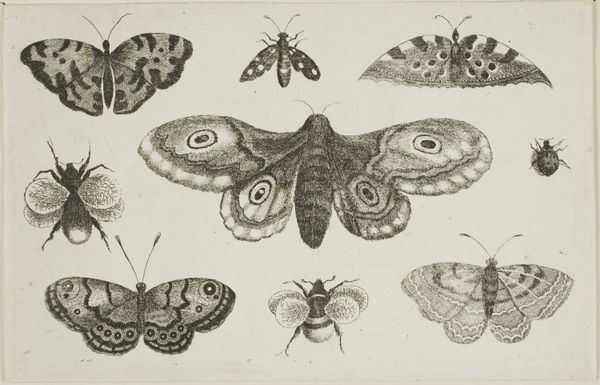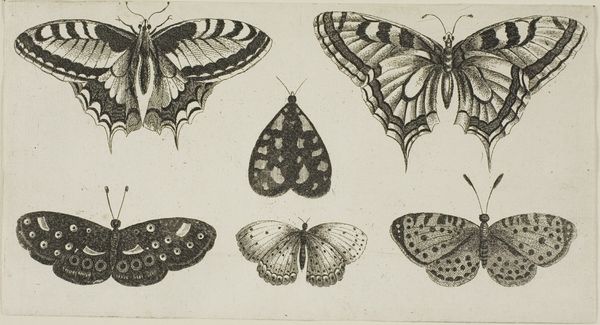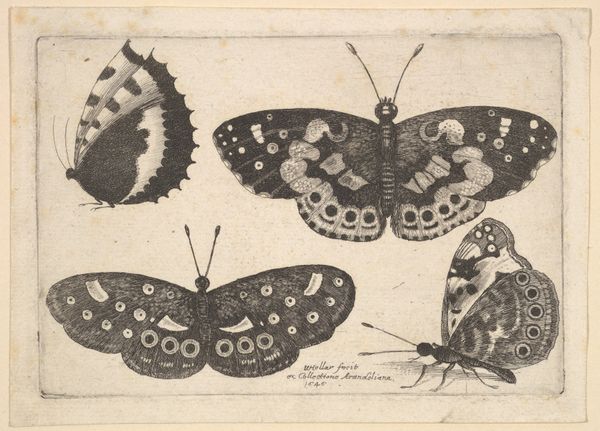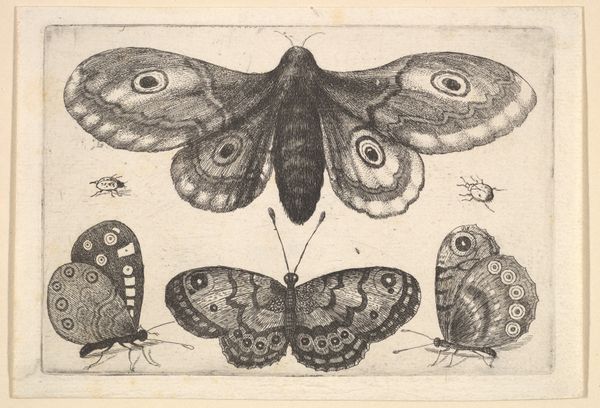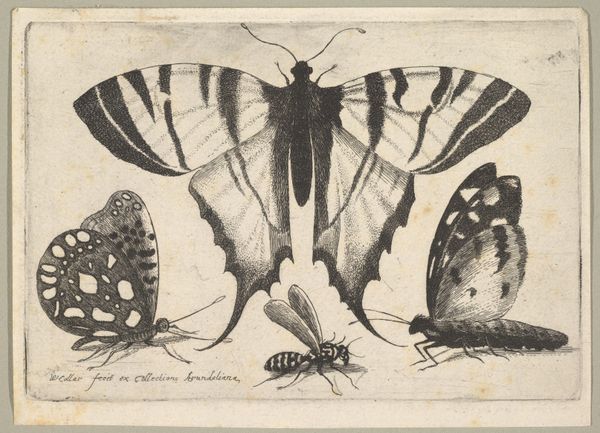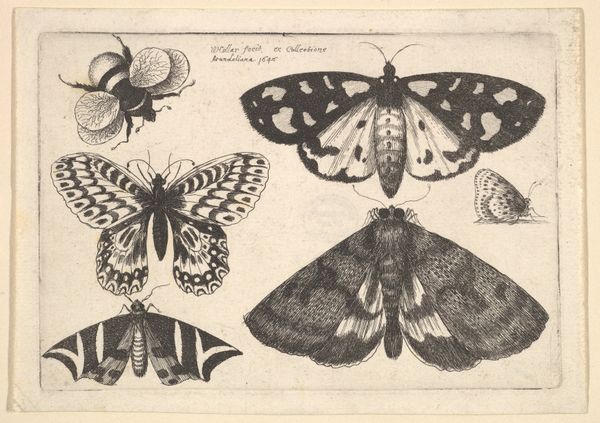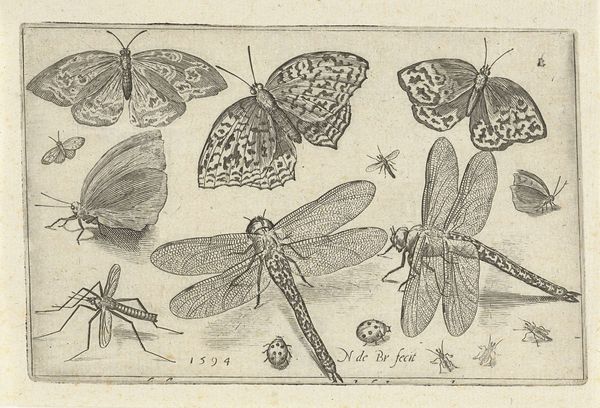
drawing, coloured-pencil, paper, pen
#
drawing
#
aged paper
#
toned paper
#
coloured-pencil
#
asian-art
#
paper
#
personal sketchbook
#
coloured pencil
#
pen and pencil
#
sketchbook drawing
#
pen
#
watercolour bleed
#
watercolour illustration
#
naturalism
#
sketchbook art
#
watercolor
Dimensions: height 195 mm, width 155 mm
Copyright: Rijks Museum: Open Domain
Curator: This artwork is entitled "Javaanse en Zweedse vlinders," which translates to Javanese and Swedish Butterflies. It's likely from sometime between 1785 and 1806 and comes from the hand of Jan Brandes. Editor: Immediately, I'm struck by the delicacy of these images. There's such fragility conveyed in the way the watercolor bleed enhances the fine pencil work, especially given the way the paper has aged. It feels so intimate, like a peek into a personal sketchbook. Curator: It really is. Brandes was, among other things, a clergyman, and the drawings formed part of his visual diary. It is insightful to observe how naturalism combines with a clear intent for recording cultural data across continents. Brandes recorded these with pen and colored pencils, making these images not merely illustrations but important ethnographic documents. Editor: Ethnographic how? It's butterflies… pretty butterflies at that! Curator: More than just pretty, consider the period and the symbolic weight attached to such detailed studies, a way of documenting, classifying, and understanding the natural world amidst colonial expansion. Note how each specimen is meticulously labelled; This wasn't merely a casual pastime but connected to broader scientific ambitions and collecting practices emblematic of that era. Butterflies themselves have cross-cultural resonance; think metamorphosis and journeys. These particular examples speak volumes when put into the social and cultural contexts that inform Brandes' global perspective, of travel between Java and Sweden. Editor: Yes, that tension you describe between science and beauty, that dance between the specific and the universal... I see what you mean, reflecting both the burgeoning scientific spirit and the symbolic use of the butterfly. Its cross-cultural resonance, a consistent symbol of transformation through various ages. I'm finding that fascinating. Curator: Indeed. The convergence of geographical origin is also something noteworthy as these cultural data become embedded within the European Enlightenment pursuit of categorization and comprehending of foreign landscapes, that became typical of 18th Century cultural production and botanical collections, not just personal travelogues, reflecting social changes and a will of defining a cultural project. Editor: Ultimately then, we have this artwork acting almost like a historical Venn diagram, perfectly overlapping nature, science, and even social identity, making what seemed just an innocent piece so surprisingly rich. Curator: Precisely. Each line and color hold a thread of a story about global exploration, colonialism, natural history, and individual perception. Editor: It certainly puts into perspective just how multi-layered and relevant even seemingly simple images can be!
Comments
No comments
Be the first to comment and join the conversation on the ultimate creative platform.
